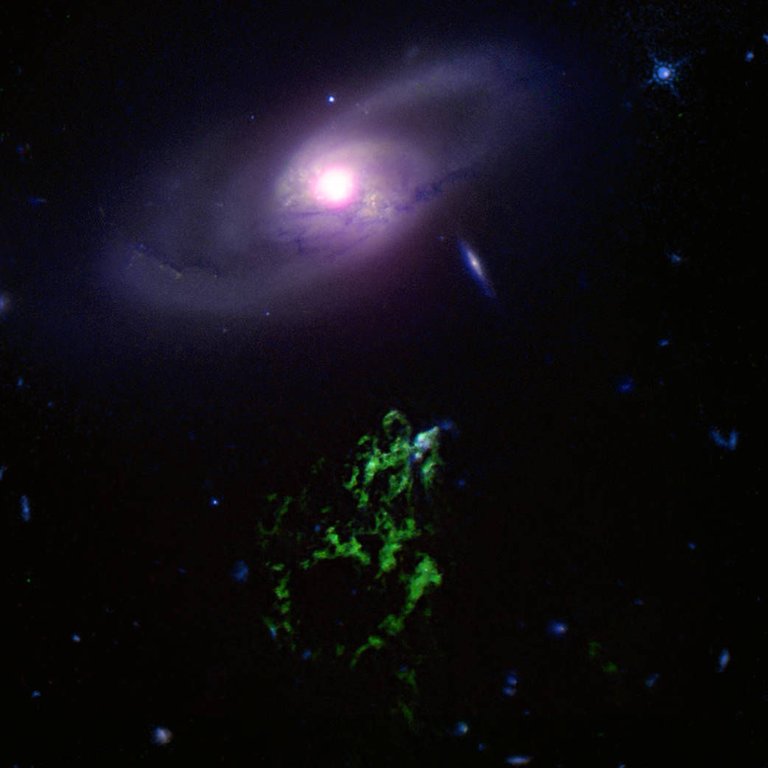Two cosmic structures show signs of remarkable changes in the behavior of a supermassive black hole lies in a distant galaxy. Using the data obtained by the space X-ray observatory, NASA "Chandra" and other telescopes, astronomers are collected in a single whole information that provides them with the observation space "blob" and a gas bubble to using this information to get an idea of the past activity of a giant black hole, and its impact on the parent galaxy.
"Green Blob» (Green Blob), a famous cosmic structure, also known as "Hanny" s Voorwerp "(« object Hanni "niderl.), Located at a distance of about 650 million light-years from Earth. The facility was opened in 2007 . Dutch school teacher Hanny van Arkel in the framework of citizen-science project (project galaxies observations involving amateur astronomers) called galaxy Zoo.
Astronomers believe that the outbreak of UV and X-ray radiation, which occurred at the supermassive black hole located in the center of the galaxy IC 2497 (a mere 200,000 light-years away) translated into an excited state oxygen atoms inside the gas cloud, which said "Green blot" its emerald hue. Currently, the black hole grows slowly and is no longer able to produce enough radiation to cause a glow so bright.
New observations made with the help of the observatory 'Chandra', show that the black hole is still producing large amounts of energy, though, and no longer able to break out with such brilliance, as "a young man." Evidence of such changes in the activity of the black hole has become the hot gas at the center of the galaxy IC 2497, found on a long exposure images taken using the "Chandra". In the center of the X-ray source is less hot gas that scientists interpret as a large gas bubble.
Astronomers believe that this bubble could be formed as a result of the impact a pair of jets emitted by the black hole, the surrounding her glowing gas. Thus, the black hole has shifted from energy dissipation in all directions to the concentrated release of energy in narrow beams, called jets.
Source: journal Monthly Notices of the Royal Astronomical Society
Source: http://www.nasa.gov/mission_pages/chandra/a-black-hole-story-told-by-a-cosmic-blob-and-bubble.html